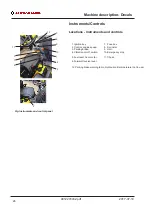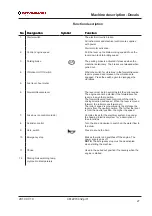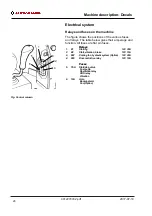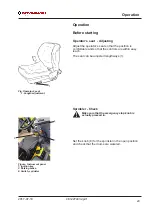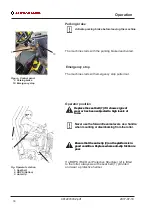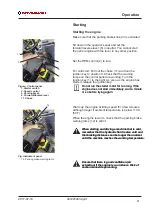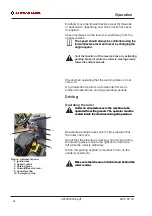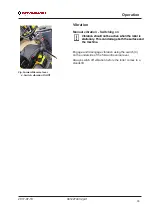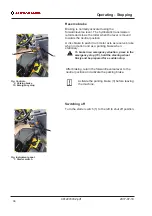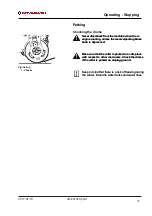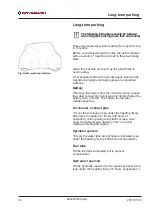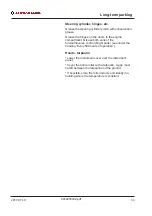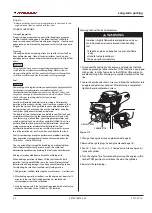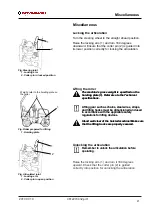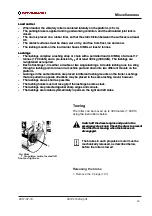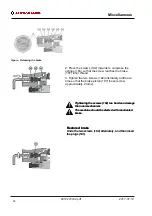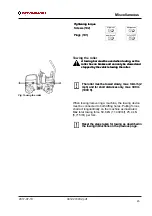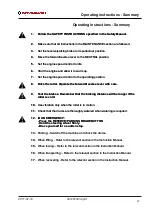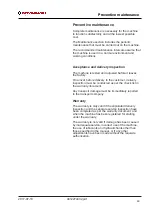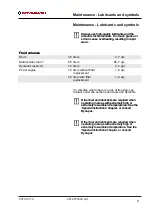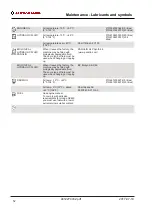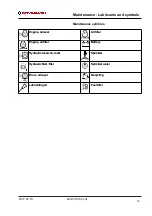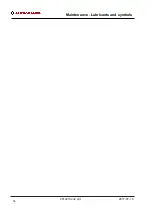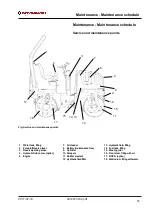
STORING YOUR ENGINE
Storage Preparation
Cleaning
Fuel
Adding a Gasoline Stabilizer to Extend Fuel Storage Life
Proper storage preparation is essential for keeping your engine
trouble-free and looking good. The following steps will help to
keep rust and corrosion from impairing your engine’s function and
appearance, and will make the engine easier to start when you use
it again.
If the engine has been running, allow it to cool for at least half an
hour before cleaning. Clean all exterior surfaces, touch up any
damaged paint, and coat other areas that may rust with a light film
of oil.
Using a garden hose or pressure washing equipment can force
water into the air cleaner or muffler opening. Water in the air
cleaner will soak the air filter, and water that passes through the
air filter or muffler can enter the cylinder, causing damage.
Stop the engine, and if the fuel tank is equipped with a fuel valve,
move the fuel valve to the CLOSED or OFF position.
After adding a gasoline stabilizer, run the engine out doors for 10
minutes to be sure that treated gasoline has replaced the
untreated gasoline in the carburetor.
Add gasoline stabilizer following the manufacturer’s instructions.
When adding a gasoline stabilizer, fill the fuel tank with fresh
gasoline. If only partially filled, air in the tank will promote fuel
deterioration during storage. If you keep a container of gasoline
for refueling, be sure that it contains only fresh gasoline.
You can extend fuel storage life by adding a gasoline stabilizer
that is formulated for that purpose, or you can avoid fuel
deterioration problems by draining the fuel tank and carburetor.
Fuel system damage or engine performance problems resulting
from neglected storage preparation are not covered under the
Distributor’s Limited Warranty
.
The length of time that gasoline can be left in your fuel tank and
carburetor without causing functional problems will vary with
such factors as gasoline blend, your storage temperatures, and
whether the fuel tank is partially or completely filled. The air in a
partially filled fuel tank promotes fuel deterioration. Very warm
storage temperatures accelerate fuel deterioration. Fuel
deterioration problems may occur within a few months, or even
less if the gasoline was not fresh when you filled the fuel tank.
Gasoline will oxidize and deteriorate in storage. Deteriorated
gasoline will cause hard starting, and it leaves gum deposits that
clog the fuel system. If the gasoline in your engine deteriorates
during storage, you may need to have the carburetor and other
fuel system components serviced or replaced.
Depending on the region where you operate your equipment, fuel
formulations may deteriorate and oxidize rapidly. Fuel
deterioration and oxidation can occur in as little as 30 days and
may cause damage to the carburetor and/or fuel system. Please
check with your servicing dealer for local storage
recommendations.
1.
2.
3.
-
-
-
Draining the Fuel Tank and Carburetor
Engine Oil
DRAIN SCREW
CARBURETOR
Gasoline is highly flammable and explosive, and you
can be burned or seriously injured when handling
fuel.
Stop the engine and keep heat, sparks, and flame
away.
Loosen the carburetor drain screw, and drain the carburetor into
an approved gasoline container. After draining is completed,
tighten the carburetor drain screw.
Disconnect the fuel line to the engine, and drain the fuel tank
into an approved gasoline container. If the fuel tank is equipped
with a valve, turn the fuel valve to the OPEN or ON position to
enable draining. After draining is completed, reconnect the fuel
line.
Wipe up spills immediately.
Reinstall the spark plugs.
Turn the engine for a few seconds by turning the engine switch
to the START position to distribute the oil in the cylinders.
Remove the spark plugs (see engine manual page 10).
Change the engine oil (see engine manual page 8).
Handle fuel only outdoors.
Pour 5 10 cm (5 10 cc, 1 2 teaspoons) of clean engine oil
into each cylinder.
1.
2.
3.
1.
2.
4.
5.
40
4812274432.pdf
2017-07-10
Long-term parking
Engine
* Below description quote from manufacturer’s instructions in the
engine manual that is supplied with the roller.
Summary of Contents for Dynapac CC900G
Page 2: ......
Page 16: ...Safety when operating 8 4812274432 pdf 2017 07 10 ...
Page 20: ...Special instructions 12 4812274432 pdf 2017 07 10 ...
Page 22: ...Technical specifications Noise Vibrations Electrical 14 4812274432 pdf 2017 07 10 ...
Page 30: ...Machine description Decals 22 4812274432 pdf 2017 07 10 ...
Page 42: ...Operation 34 4812274432 pdf 2017 07 10 ...
Page 54: ...Operating instructions Summary 46 4812274432 pdf 2017 07 10 ...
Page 56: ...Operating instructions Summary 48 4812274432 pdf 2017 07 10 ...
Page 58: ...Preventive maintenance 50 4812274432 pdf 2017 07 10 ...
Page 62: ...Maintenance Lubricants and symbols 54 4812274432 pdf 2017 07 10 ...
Page 70: ...Maintenance Maintenance measures before use 62 4812274432 pdf 2017 07 10 ...
Page 80: ...Maintenance 100h 72 4812274432 pdf 2017 07 10 ...
Page 88: ...Maintenance 500h 80 4812274432 pdf 2017 07 10 ...
Page 96: ...Maintenance 1000h 88 4812274432 pdf 2017 07 10 ...

